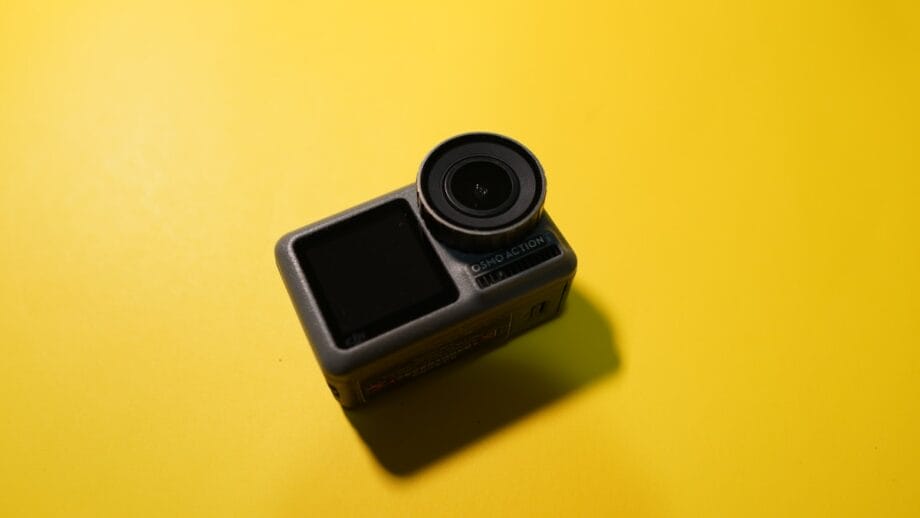DJI’s prowess in condensing professional-grade imaging technology into remarkably compact designs continues to impress. The latest addition to their lineup, the Osmo Nano, encapsulates the same 1/1.3-inch sensor and 4K filming capabilities found in the Action 5 Pro, all neatly packed within a 52-gram framework that’s even smaller than most wireless earbud cases.
Since the inception of the original Osmo handheld gimbal in 2015, DJI has steadfastly pushed the envelope of portable stabilization tech. The Nano stands as the latest testament to this philosophy, sacrificing bulk for remarkable versatility while preserving the exceptional imaging quality that established its predecessors as indispensable tools for content creators.
Magnetic Modularity Done Right
Weighing an impressive 1.83 ounces, the Osmo Nano introduces a plethora of innovative technology. In contrast to the cumbersome accessory ecosystem of the Action 2, this device employs a groundbreaking Vision Dock system featuring dual-sided magnetic connections, vastly enhancing mounting options.
This dock can be oriented in either direction, effectively resolving the persistent selfie-versus-POV conundrum that often plagues action cameras. The inclusion of a 1.96-inch OLED touchscreen means users are no longer shooting in the dark, and wireless remote functionality operates flawlessly, allowing recording to be triggered from a distance. Photo: DJI
Professional Image Quality in Your Pocket
The integration of a 1/1.3-inch sensor provides an impressive dynamic range of 13.5 stops, capable of capturing 4K video at up to 120fps, ideal for slow-motion sequences. With a 143-degree field of view, the device deftly balances comprehensive scene capture while mitigating excessive distortion.
D-Log M color profile support endows serious creators with the flexibility sought for color grading, and the 10-bit recording ensures subtle tonal gradations, distinguishing it from conventional action camera footage.
RockSteady 3.0 stabilization adeptly mitigates shake, albeit the HorizonBalancing feature is restricted to 16:9 modes. For low-light scenarios, SuperNight mode employs advanced noise reduction algorithms; however, it is constrained to 8-bit recording at 30fps in this setting.
Built for Real-World Use
The battery performance is remarkable given the device’s size. The standalone camera functions for 90 minutes, with this duration extending to an impressive 200 minutes when used in conjunction with the Vision Dock. Furthermore, it offers 10 meters of water resistance, earning an IPX4 rating against splashes and rain.
Eliminating the need for separate receivers, the OsmoAudio direct microphone connection supports simultaneous connection of up to two transmitters. Coupled with dual built-in mics for stereo recording, the audio capabilities far surpass expectations for a device of this compact stature. Photo: DJI
Nod Too Shabby
Gesture control, allowing for nodding or tapping the device, facilitates hands-free operation, while the Pre-Rec feature ensures you capture critical moments that occur before hitting record.

The Auto Recording mode permits users to establish intervals and durations for automated capture, particularly advantageous for time-lapse endeavors or scenarios where manual control is less feasible.
For streamlined file management, the Osmo Nano supports transfer speeds of up to 600MB/s via USB-C, and a microSD card slot permits expansion beyond the internal storage options of 64GB or 128GB.
Spec Sheet
Model: DJI Osmo Nano
Sensor: 1/1.3-inch CMOS, 35MP
Lens: f/2.8, 143° FOV
Video: 4K/60fps, 4K/120fps slow-motion
Weight: 1.83oz
Battery: 90 to 200 minutes, depending on configuration
Waterproof: 10m (camera), IPX4 (with dock)
Storage: 64GB or 128GB
Connectivity: Wi-Fi 6.0, Bluetooth 5.1/5.4
Pricing & Availability
The Osmo Nano is set to launch on September 23 in Europe, with pricing starting at €279 (approximately $330) for the 64GB model and €309 (about $365) for the 128GB variant. Notably, DJI has chosen not to introduce this model to the U.S. market at launch, citing ongoing tariff complications.
DJI Osmo Nano
The DJI Osmo Nano merges flagship-level 4K imaging capabilities with a 1/1.3-inch sensor, all within an exceptionally compact 1.83oz modular construction. However, it will not be available in the U.S. at launch due to existing regulatory issues.
Source link: Hiconsumption.com.





